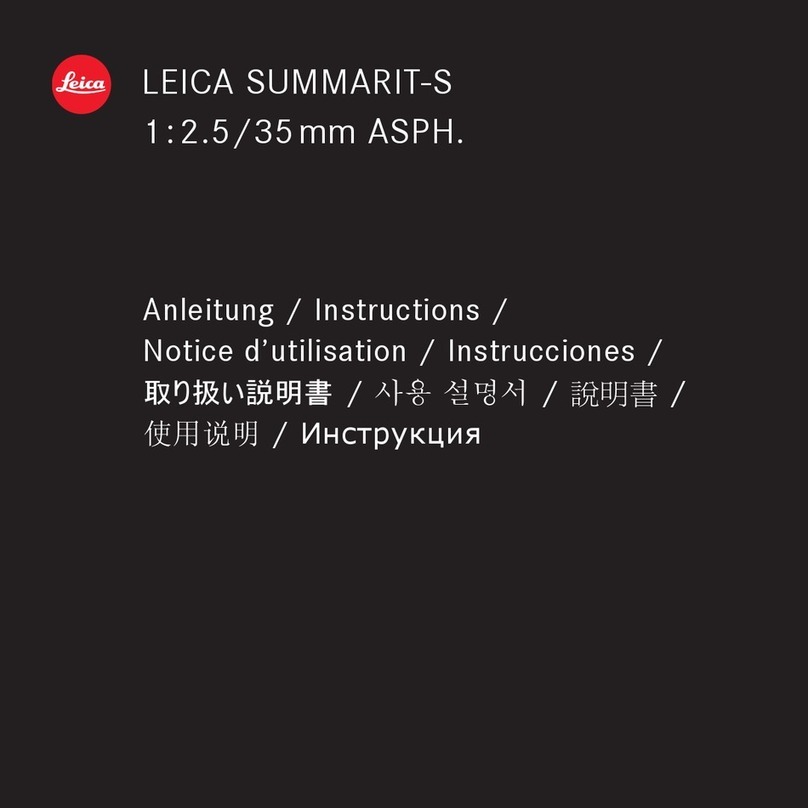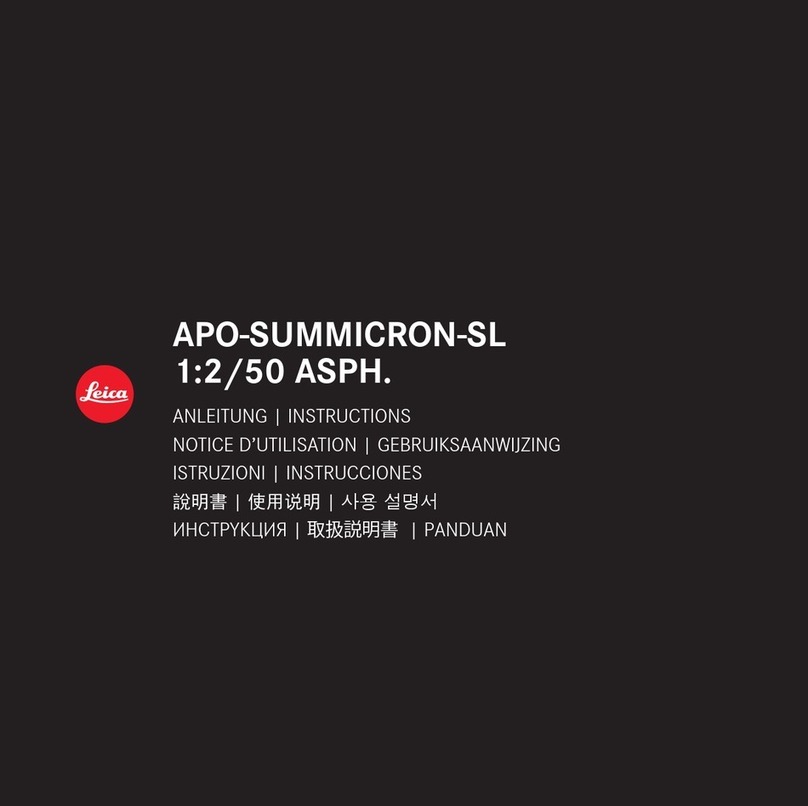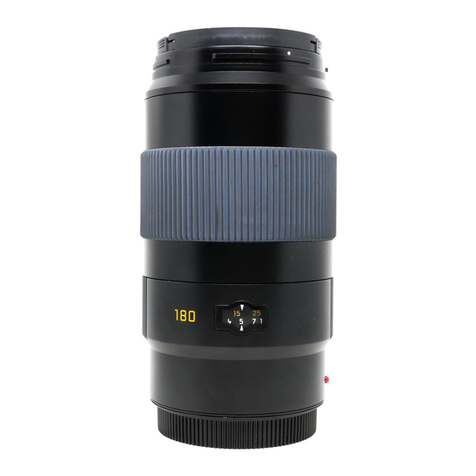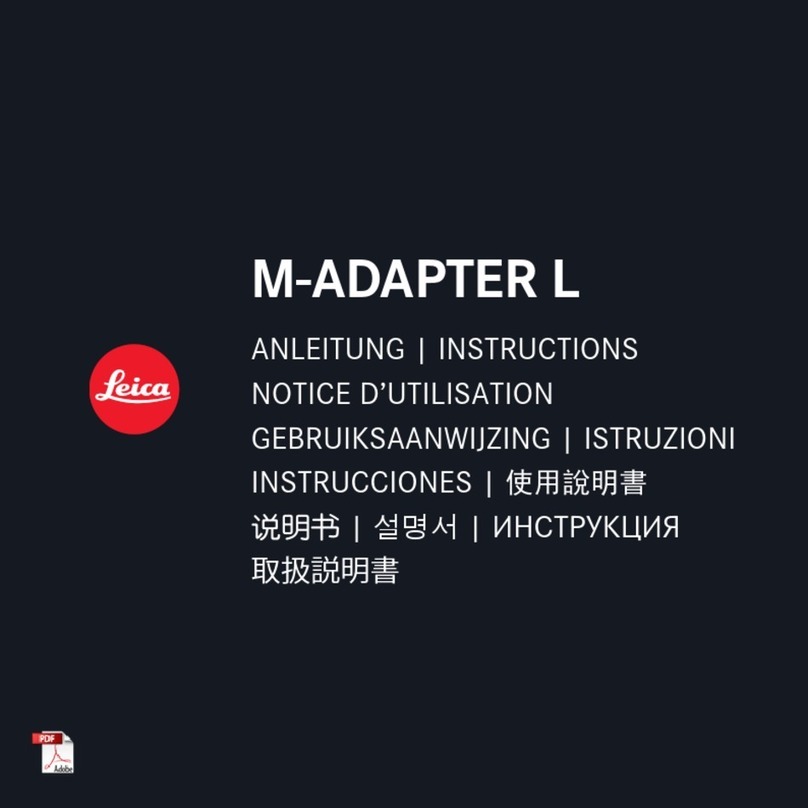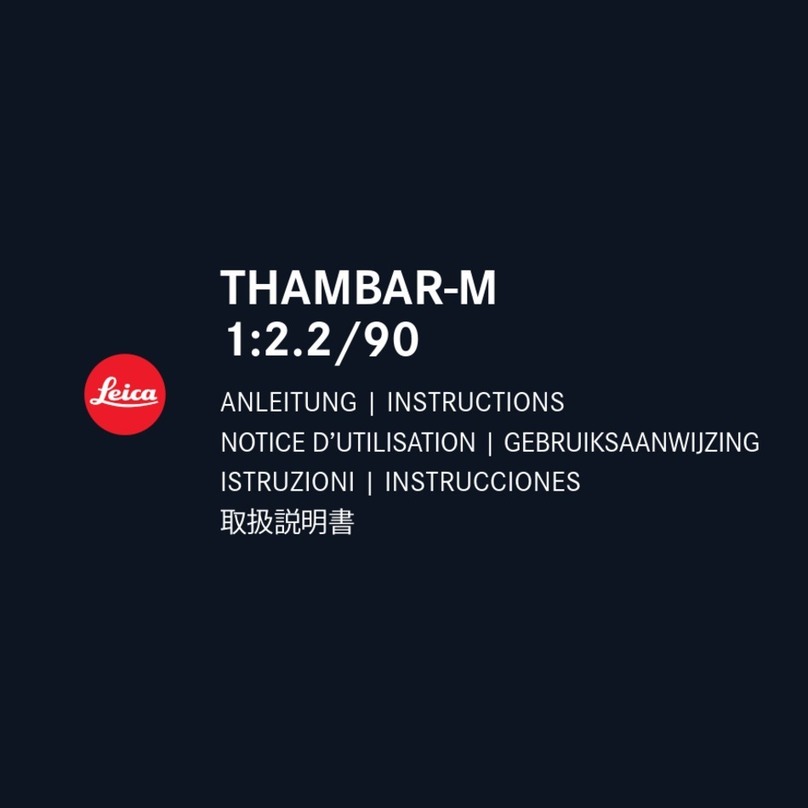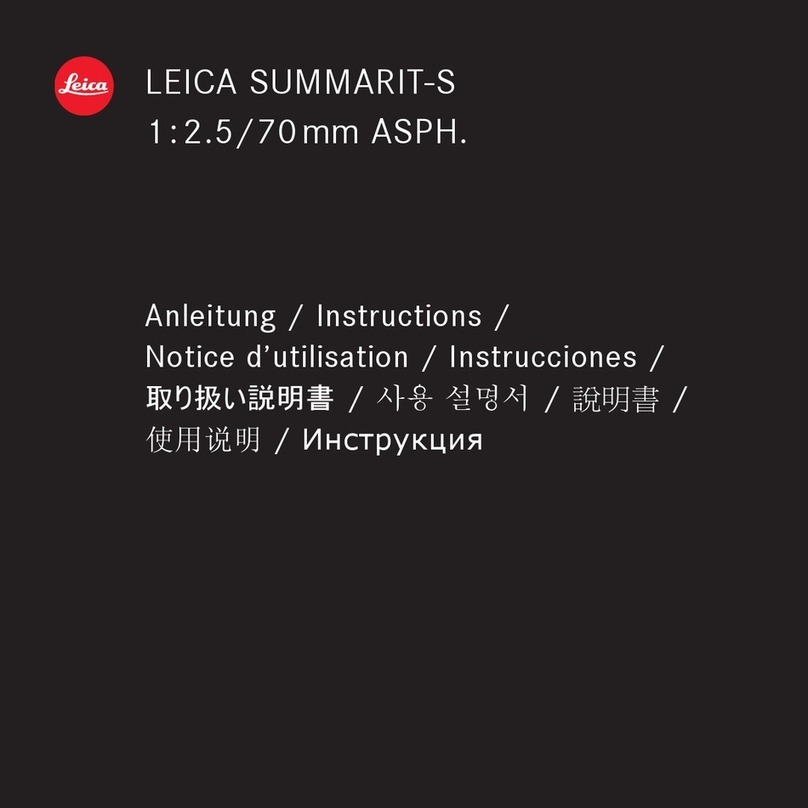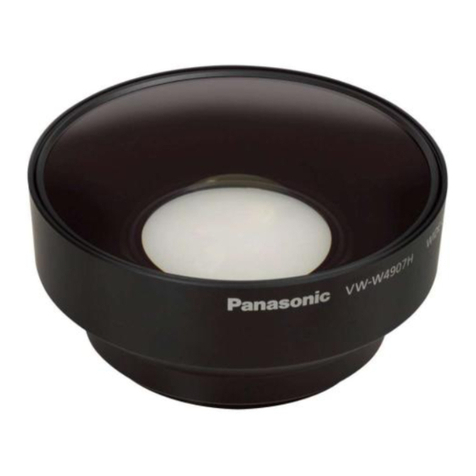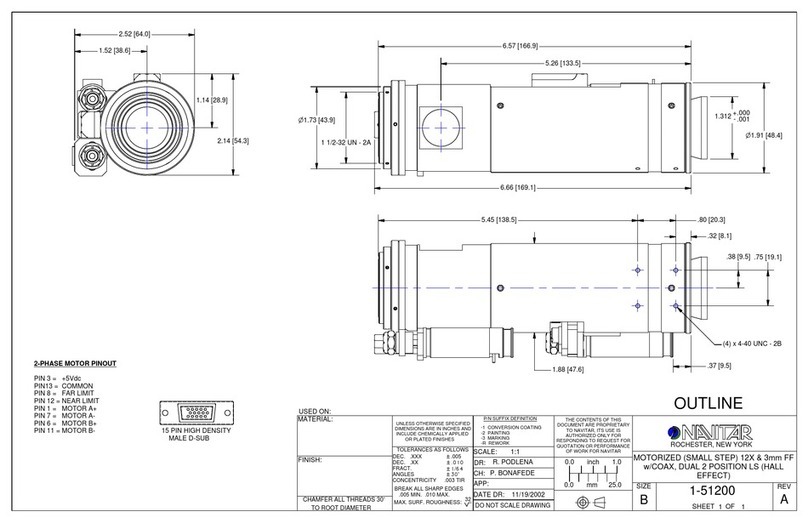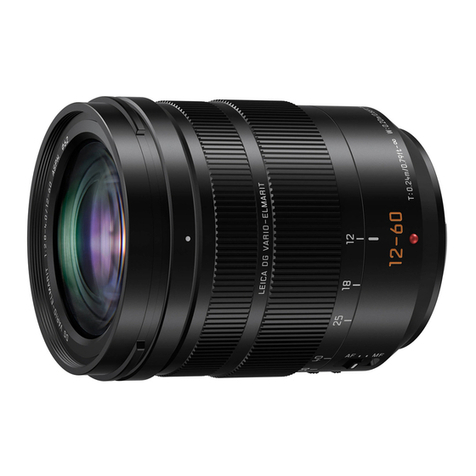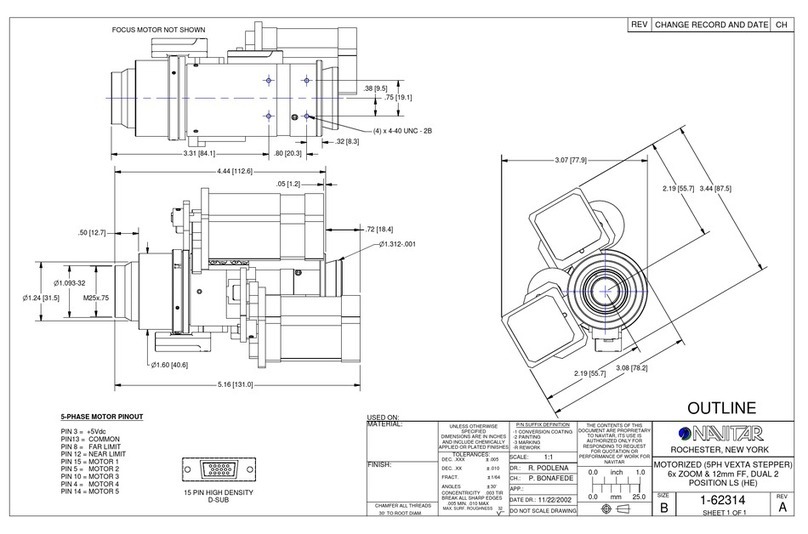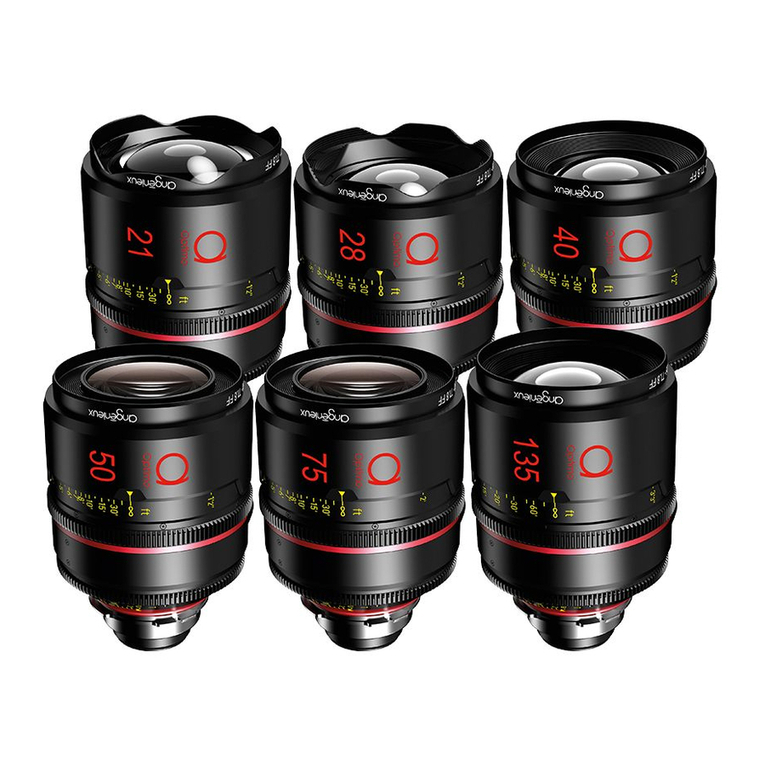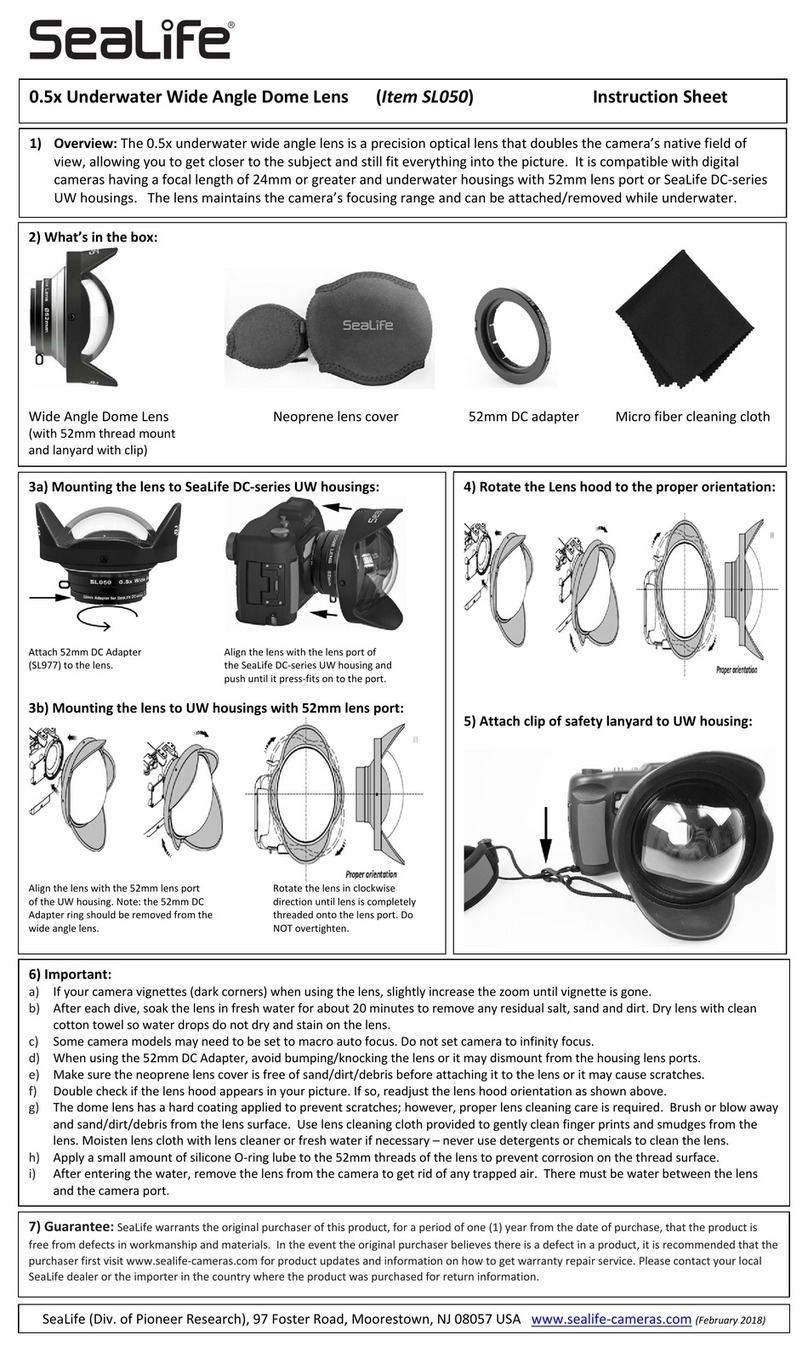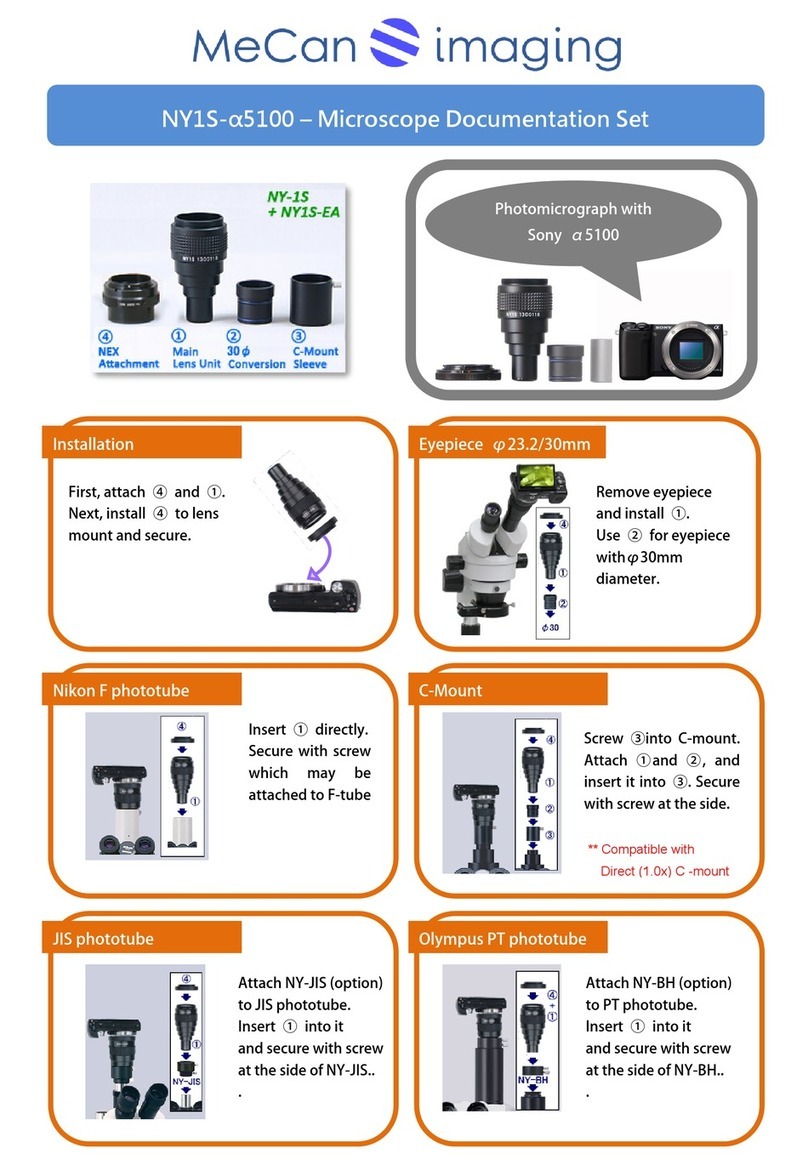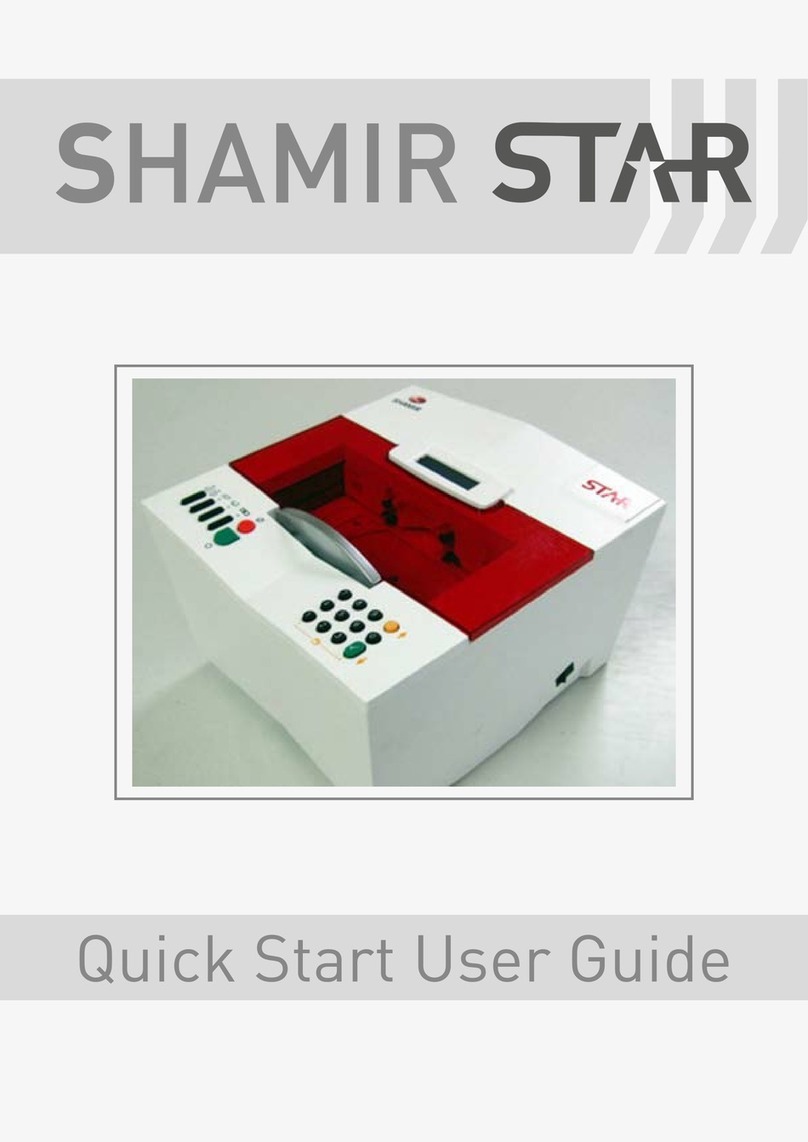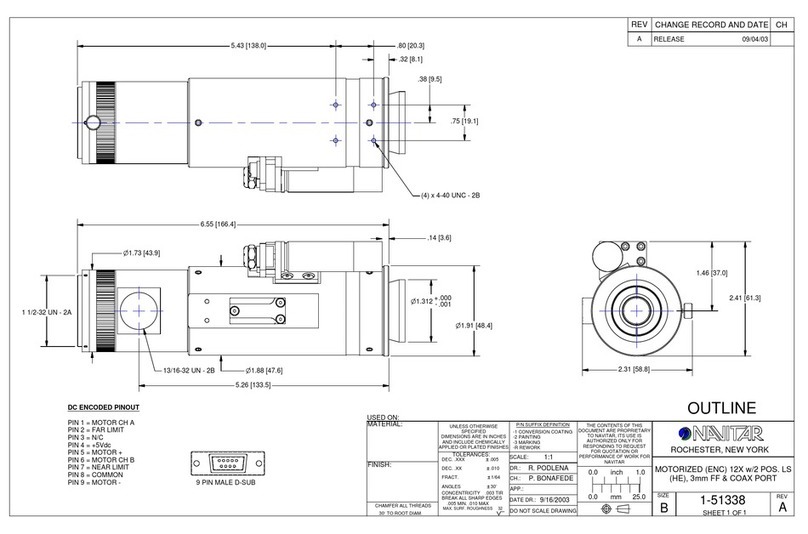
DE
4
AUFBAU DER LEICA SL-OBJEKTIVE
Alle Leica SL-Objektive weisen im Prinzip den gleichen äußeren Aufbau auf: Es gibt an der vorderen
Fassung 2ein Außenbajonett 2a für die Gegenlichtblende 1und ein Innengewinde 2c für Filter, sowie
einen Entfernungs-Einstellring 3und einen roten Indexknopf für den Objektivwechsel 4.
Innerhalb des Bajonetts befindet sich eine Kontaktleiste 5, über die der gesamte Datenaustausch
zwischen Kamera und Objektiv stattfindet, einschließlich der Steuerbefehle für den Autofokus und die
Blende.
EINSTELLEN DER SCHÄRFE
Das Einstellen der Schärfe erfolgt bei Autofokus-Betrieb automatisch durch die Kamera, bei Manuell-
Betrieb durch Drehen des Entfernungs-Einstellrings 3. Die Geschwindigkeit, mit der Sie den Ring
drehen, bestimmt dabei wie schnell sich die Einstellung verändert. So können Sie ebenso gezielt
Fein-Einstellungen vornehmen, wie auch schnell vom Nah- in den Fernbereich gelangen. Weitere
Einzelheiten entnehmen Sie bitte den entsprechenden Abschnitten in der Kamera-Anleitung.
SCHÄRFENTIEFE
Da Leica SL-Objektive keinen Blendenring besitzen, ist auch keine Schärfentiefe-Skala vorhanden. Bei
der Leica SL können die jeweiligen vorderen und hinteren Grenzen der Schärfentiefe zusammen mit
der eingestellten Entfernung stattdessen im Deckkappen-Display der Kamera abgelesen werden.
GEGENLICHTBLENDE
Das Leica APO-Summicron-SL 1:2/75 ASPH. wird mit einer optimal auf die Strahlengänge abge-
stimmten Gegenlichtblende 1geliefert. Sie lässt sich dank ihres symmetrischen Bajonetts schnell und
einfach, und zur platzsparenden Aufbewahrung auch umgekehrt aufsetzen. In beiden Fällen wird sie,
bei abgenommenem Objektivdeckel, zunächst so aufgesetzt, dass sich einer der Indexpunkte auf der
Gegenlichtblende 1a genau dem Indexpunkt an der Frontfassung des Objektivs 2b gegenüber steht.
Anschließend wird sie ca. 30° im Uhrzeigersinn gedreht bis sie deutlich hör- und spürbar einrastet.
Solange die Kamera fotografierbereit getragen und benutzt wird, sollte die Gegenlichtblende immer
aufgesetzt bleiben. Sie schützt wirksam gegen kontrastminderndes Nebenlicht, aber auch gegen
Beschädigungen und Verschmutzungen der Frontlinse, wie z. B. durch versehentliche Fingerabdrücke.
